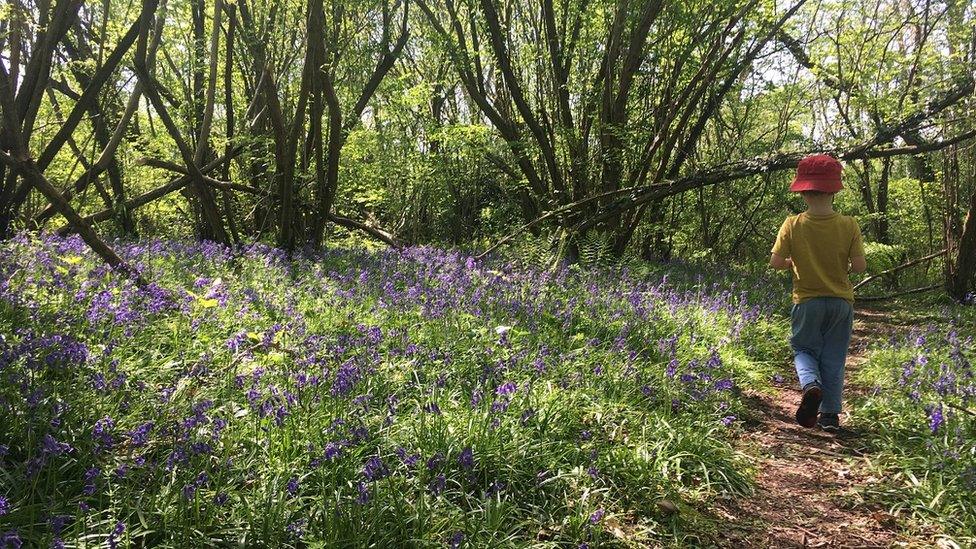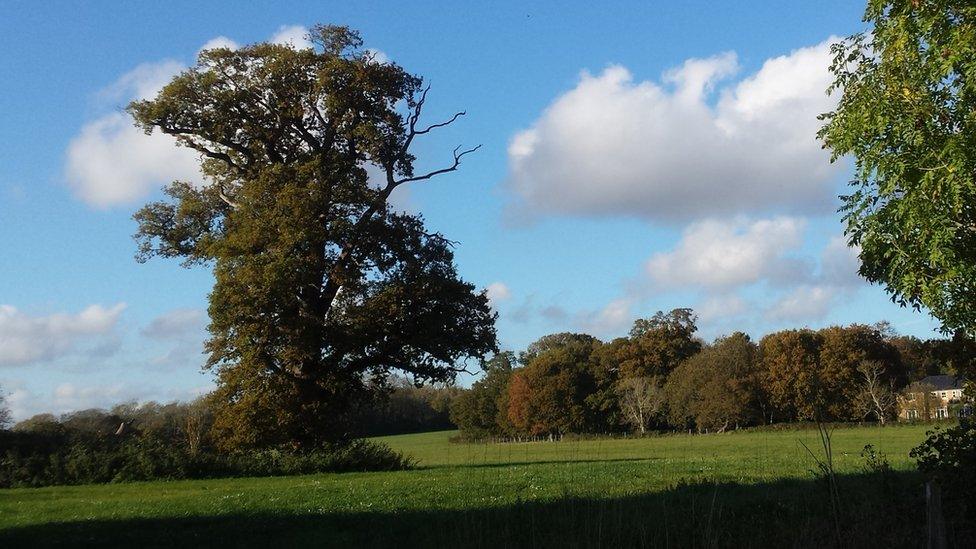Arundel road scheme 'could harm ancient woodland'
- Published

Campaigners say a few minutes shaved off journey times don't justify the potential damage to the park
Road builders planning a bypass in Sussex, UK, have been urged to find a way that doesn't cause damage to ancient woodland.
The head of South Downs National Park, Margaret Paren, believes engineers can devise a scheme to take cars out of the park, not through it.
She says the plan could damage ancient woods, just as ministers are pledging more protection for national parks.
Highways England says the project will solve congestion round Arundel.
But campaigners say the organisation’s case has been undermined by new calculations showing that economists have over-estimated by three-fold the number of vehicles that would be using the current A27 past Arundel.
Highways England reveals A27 bypass route
Most people in the area are said by the local council to support a bypass. Some want a new road on any route; others support road-building but want to protect the national park. Another group argues that new roads aren’t needed at all.
Judicial review
Ms Paren told BBC News that the park’s board doesn’t oppose plans to improve the A27, but insists that a route which would bisect the nature reserve is unacceptable.
She said: “We want to help solve Arundel’s traffic problems but we don’t think Highways England has properly considered routes that don’t damage the national park.
“The government’s rules state that planning permission should be refused for major developments in national parks except in exceptional circumstances and where it can be demonstrated they are in the public interest."

The South Downs National Park's authority is seeking a judicial review on the road plans
This argument is at the centre of the judicial review the national park's authority is seeking on the £250m road plan.
The issue is made particularly relevant following a recent promise by the Environment Secretary Michael Gove to seek better protection for national parks, as part of the government’s stated aim of leaving the UK’s natural environment better than it found it.
Sue Elphick’s family will arguably be more harshly affected by the bypass plan than any other.
Her picturesque cottage nestles at the end of an unmade wooded track. It overlooks an outcrop of the park that used to form the grounds of a stately home.
It’s a quintessentially English view.
“It’s full of nature,” she told me. “Seeing the barn owls swooping round this park here hunting… then they suddenly drop. It’s just the most amazing sight. The dual carriageway will be coming straight through their feeding ground here.
“Then we see the deer. And the badgers. Sometimes you have to duck your head because there are so many bats here – you just think whooo! there’s another one, as they brush past your ear.”
Her voice dropped to a hoarse whisper as she said: “Whatever they do here is a devastation really. That’s all you can say.”
She believes drivers should be willing to tolerate a delay on their journeys in order to protect precious countryside.
Supporters of the bypass say it’s sad but inevitable that some householders will suffer for the majority of drivers to benefit.
Councillor Mrs Gillian Brown, leader of Arun District Council, told BBC News: “I am delighted with the choice of route and level of support for this option (through the Park).
“This route will benefit the whole district by improving traffic-flow and supporting businesses.”
Nick Field from the pro-bypass pressure group One Arundel said: “Of course I understand the views of objectors, but this is simply a matter of progress. You can get delays on this road at any time and the roads have to run more smoothly.”
Delays at evening rush hour round Arundel are said to average 6-10 minutes.
Follow Roger on Twitter., external